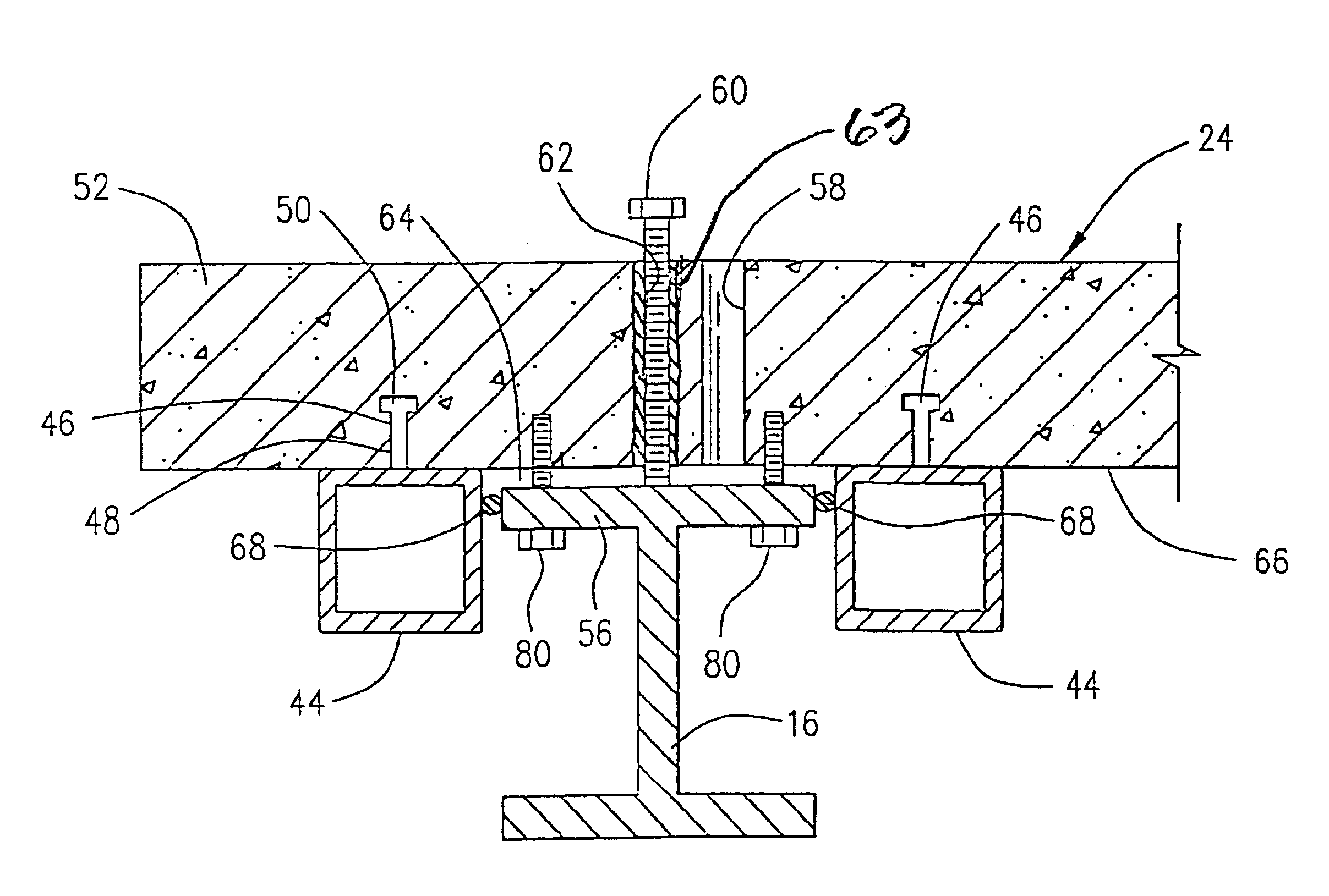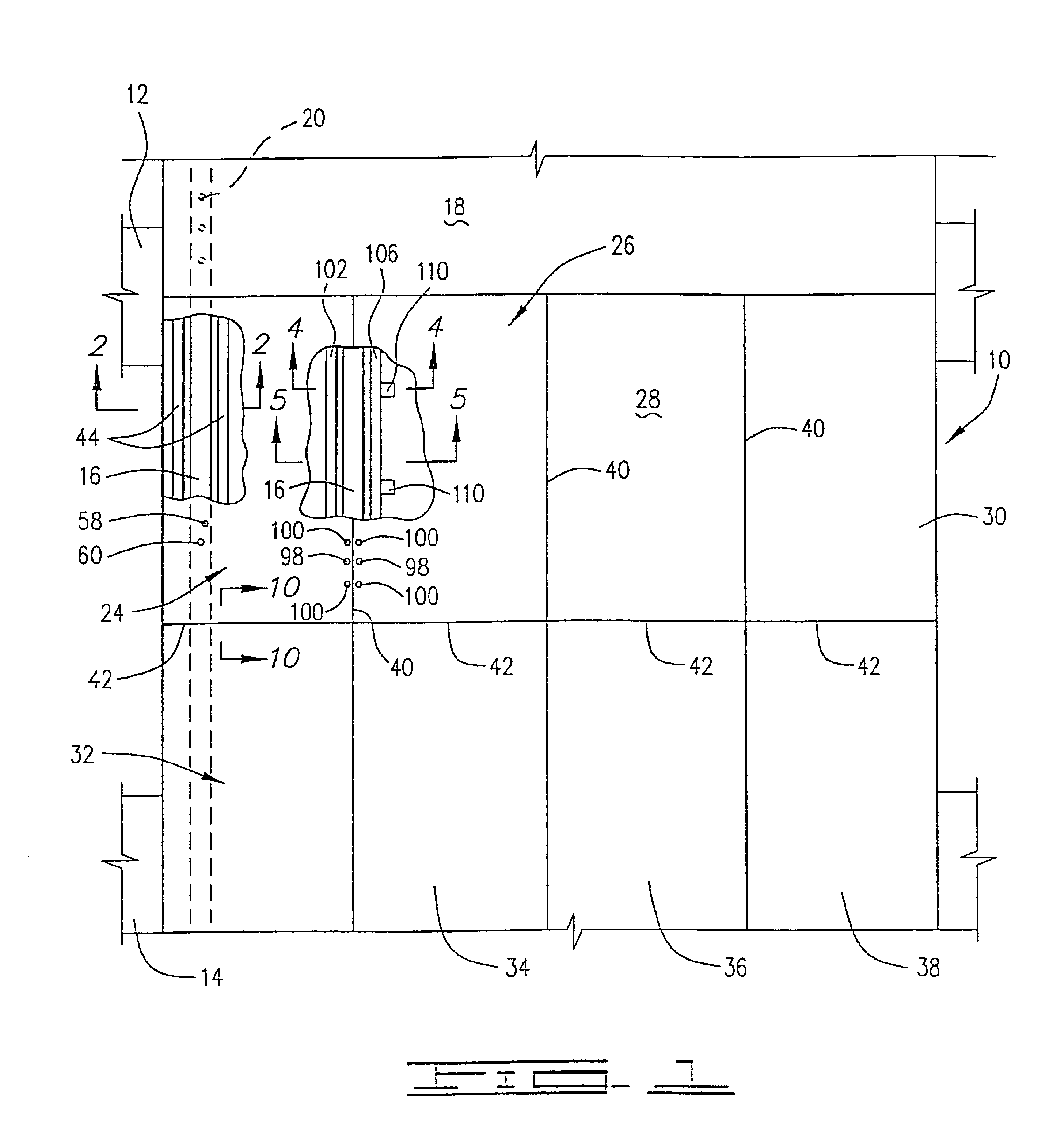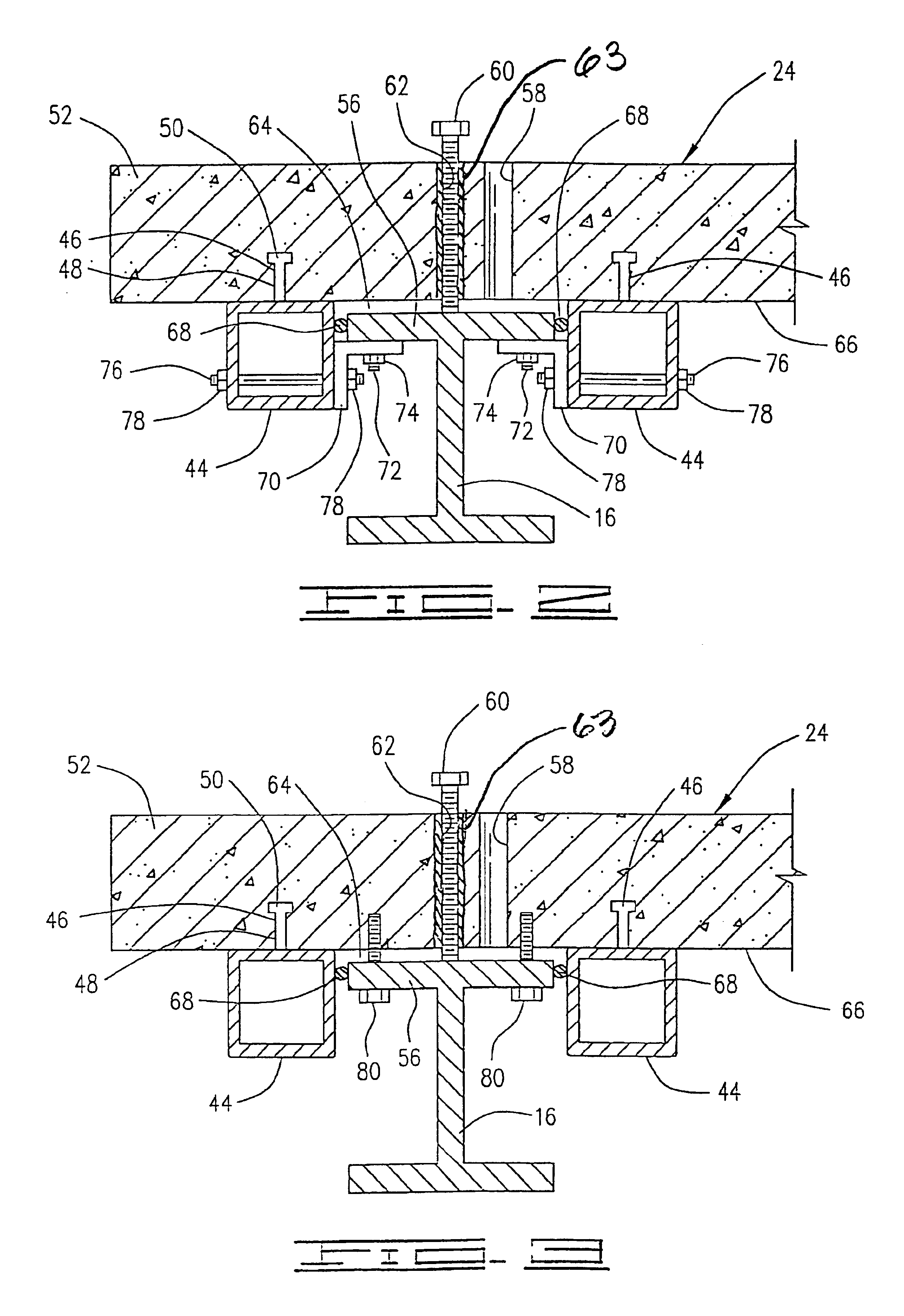Modular bridge structure construction and repair system
- Summary
- Abstract
- Description
- Claims
- Application Information
AI Technical Summary
Benefits of technology
Problems solved by technology
Method used
Image
Examples
first embodiment
The first embodiment is shown in FIGS. 4 and 5 and is generally designated by the numeral 90. As will be further discussed herein, FIG. 4 shows the installation of modules 24 and 26 and further illustrates precompression assembly thereof. A shear connection between modules 24 and 26 and girders 16 is also shown. FIG. 5 shows additional shear connections at different locations longitudinally along girders 16 at which precompression is not applied. In other words, the precompression assembly components are not required for every shear connection.
Referring now in detail to FIG. 4, modules 24 and 26 have facing longitudinally extending sides 92 and 94 respectively. When sides 92 and 94 are positioned over girder 16 by using leveling bolts 98, sides 92 and 94 which form joint 40 are coated with a quantity of an epoxy adhesive 96 and the all-thread rods 140 are used to squeeze sides 92 and 94 tightly together. Leveling bolts 98 may be disposed in threaded inserts (not shown) similar to pr...
second embodiment
Referring now to FIGS. 6 and 7, a second embodiment of the modular bridge structure of the present invention is shown and generally designated by the numeral 160. Second embodiment bridge 160 is different in configuration in some respects from first embodiment 90, but performs in basically the same manner.
Second embodiment bridge 160 comprises modules 162 and 164 which are installed on a girder 166. Girder 166 is illustrated as an old-style, fabricated girder having a vertical web 168 and a pair of upper flanges 170 and 172 which are attached to web 168 by a plurality of rivets 174. This old-style girder construction is shown for illustrative purposes only, and the second embodiment is not intended to be limited to such a girder. The previously described girder 16 could also be used as will be seen by those skilled in the art.
Modules 162 and 164 arc constructed in a manner similar to those previously described. For example, module 162 comprises a deck portion 176 and a longitudinall...
third embodiment
A third embodiment is shown in FIGS. 8 and 9 and generally designated by the numeral 240. In this embodiment as illustrated, two prefabricated modules 242 and 244 are shown forming a joint 246 above a girder 248. Girder 248 may be identical to either girder 16 or girder 166 previously described for the first two embodiments. In this case, joint 246 is shown with a tongue-and-groove configuration having a tongue 250 on deck portion 252 of module 242 extending into a groove 254 and a deck portion 256 of module 244. Both sides of this tongue-and-groove joint 246 are coated with an epoxy adhesive 258. It should be understood that the tongue-and-groove arrangement illustrated for third embodiment 240 could be applied to first embodiment 90 and second embodiment 160 as well.
Module 242 has a longitudinally extending beam or steel member, preferably in the form of a longitudinal tube 260 which is connected to deck portion 252 by a plurality of shear connectors 262. Similarly, module 244 has...
PUM
 Login to View More
Login to View More Abstract
Description
Claims
Application Information
 Login to View More
Login to View More - R&D
- Intellectual Property
- Life Sciences
- Materials
- Tech Scout
- Unparalleled Data Quality
- Higher Quality Content
- 60% Fewer Hallucinations
Browse by: Latest US Patents, China's latest patents, Technical Efficacy Thesaurus, Application Domain, Technology Topic, Popular Technical Reports.
© 2025 PatSnap. All rights reserved.Legal|Privacy policy|Modern Slavery Act Transparency Statement|Sitemap|About US| Contact US: help@patsnap.com



